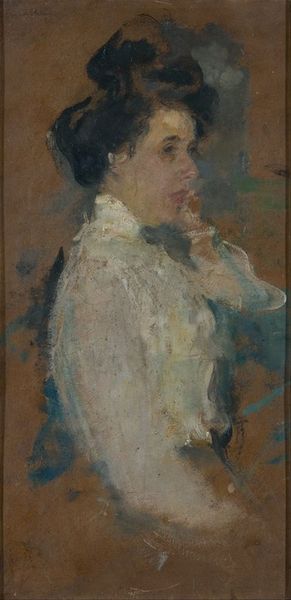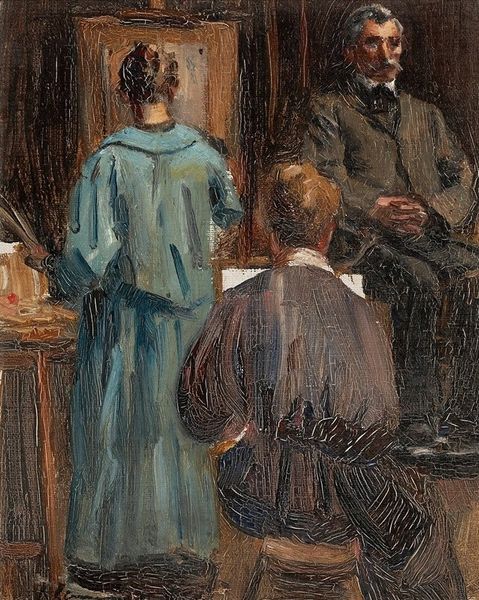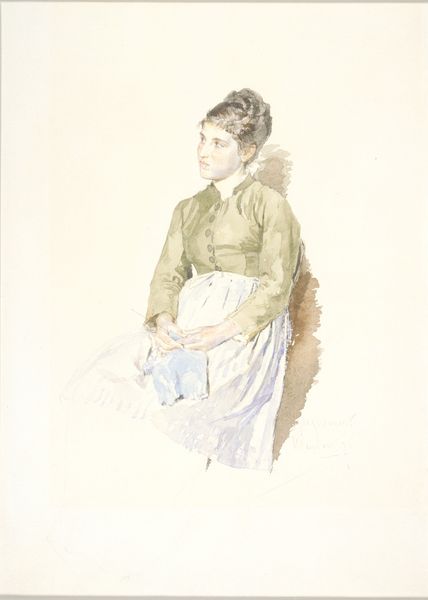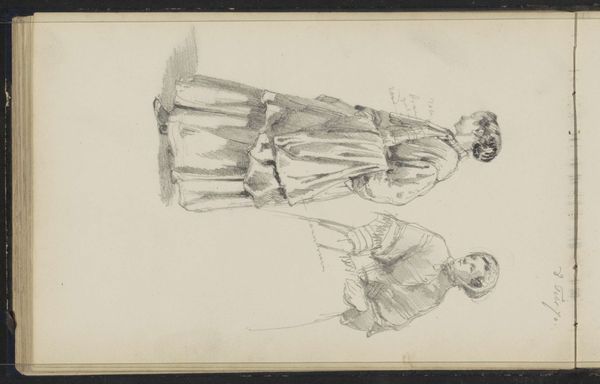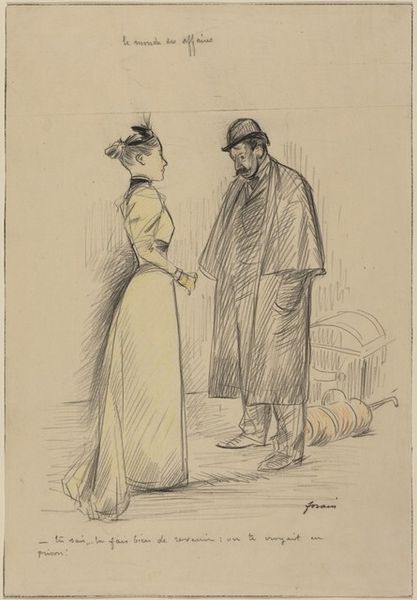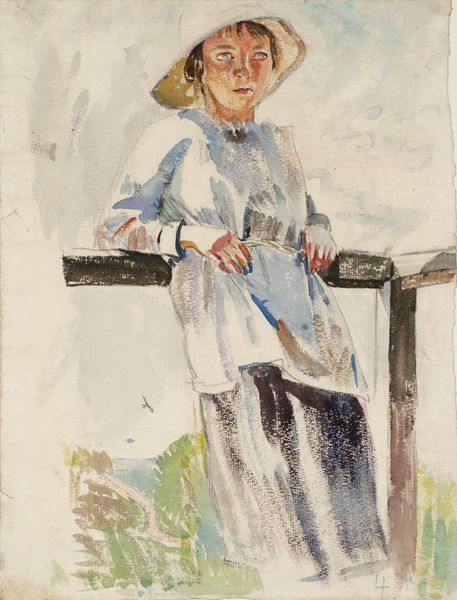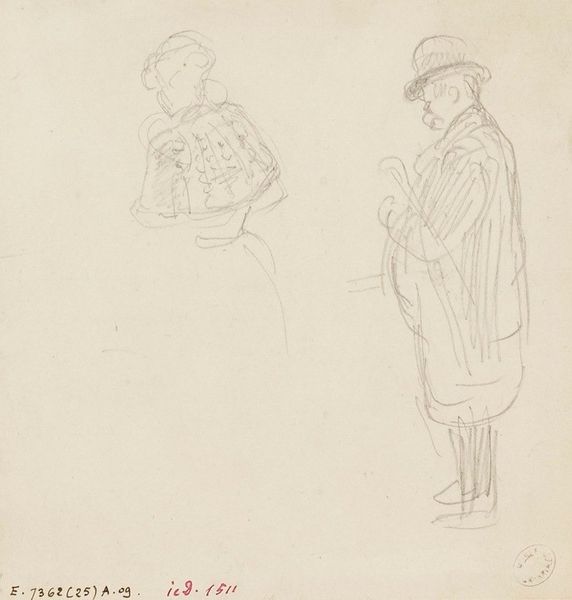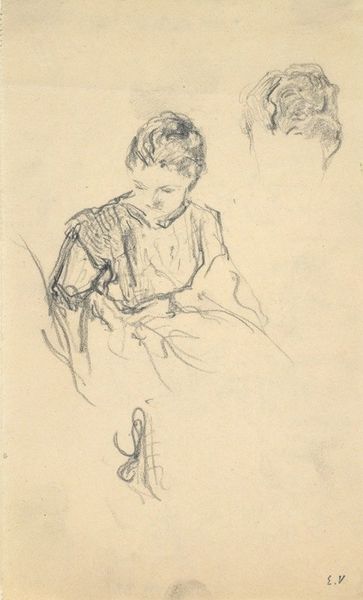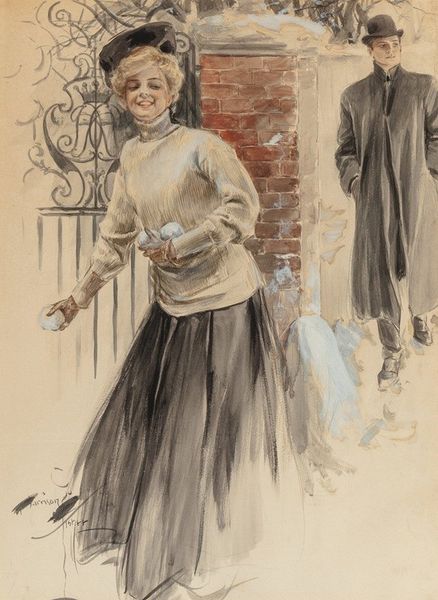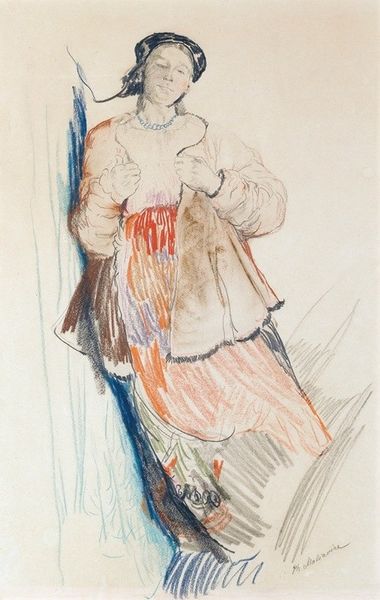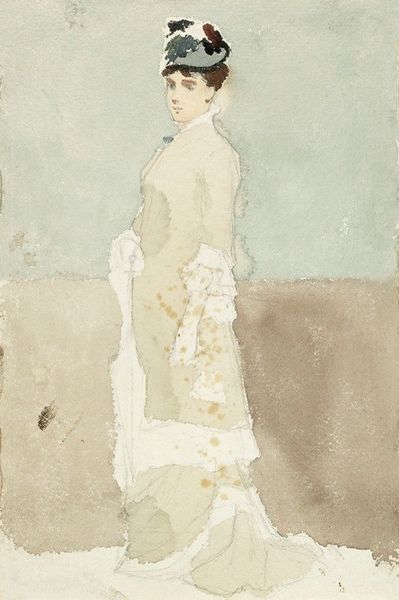
drawing, coloured-pencil, pencil
#
portrait
#
drawing
#
figurative
#
coloured-pencil
#
impressionism
#
pencil sketch
#
figuration
#
coloured pencil
#
underpainting
#
pencil
#
portrait drawing
#
watercolor
Copyright: Public Domain: Artvee
Curator: The work before us is a coloured-pencil drawing by Peder Severin Krøyer, titled “Postmaster Schrøder, Anna Ancher and Henny Brodersen”. It portrays three figures grouped together in a seemingly casual composition. Editor: I'm immediately drawn to the woman in the center; she radiates an air of effortless confidence with that captivating smile. It has an impressionistic sensibility; airy, yet intimate. Curator: Indeed. Krøyer, deeply embedded in the artistic milieu of Skagen, often captured scenes from the lives of his artist friends. Knowing the societal constraints of the time is essential; Skagen provided a somewhat rare haven where women artists like Anna Ancher could flourish. How do you see that reflected here? Editor: The grouping and presentation of Anna challenges established hierarchies. By placing her centrally and investing her with that unmistakable gaze, Krøyer quietly subverts conventional portraiture norms of his era. Her presence resists mere objectification. The gaze of Schrøder could suggest he is someone who gave her support to continue the activity as a painter in that environment. Curator: Precisely, consider the institutions of the art world at the time. Exhibitions, academies, patronage… they were largely shaped by men. Krøyer was navigating and also, perhaps subtly challenging, that terrain. Do you see evidence in the materials of this work for any commentary on such a context? Editor: I do, and here is why I think so: colored pencil often relegated to sketches and preparatory works. Using it for a portrait, even one that feels so immediate, might also be a comment on accessible mediums versus oils in stuffy salons. Curator: Excellent point. This lends a kind of documentary feeling. He’s rendering a real social reality. Note that this portrait is dedicated "to Henny from Søren" in its very fabric! It feels immediate because it’s a candid moment transformed into an artifact. Editor: These small details offer an incredible opportunity for contemporary audiences to reconsider the frameworks of creative production and reception. Curator: And I think Krøyer's work reminds us to keep those frameworks in our sightline whenever we visit an exhibition like this. It reminds us of the politics, but most of all, of the potential of visual rendering for self determination.
Comments
No comments
Be the first to comment and join the conversation on the ultimate creative platform.
